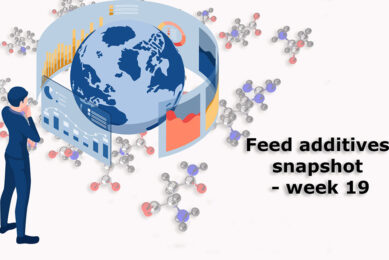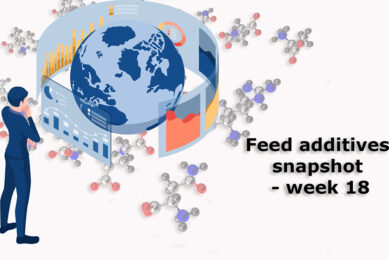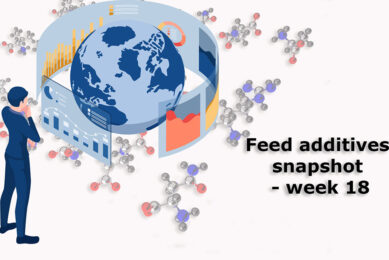US pork sector close to financial disaster
Drought and the impact on feed prices may be on the verge of creating a financial disaster for the US pork industry and other livestock.
The crop stress that began in Indiana and Illinois is now spreading further to the west. Although much of the media attention has been focused on crop producers, who face large yield losses, livestock producers may ultimately fare even worse.
“Crop producers have the potential for two compensating income streams when yields are low,” says Purdue University Extension economist Chris Hurt.
“The first is what is called the ‘natural hedge.’ When yields are low across a broad geographic area, then prices generally rise. This is especially true when stocks-to-use ratios are tight as they are now. Under these conditions a 10% reduction in national yield is offset by a rise in prices that is substantially more than 10%.
“This means that revenues tend to be less negatively affected by yield losses. Many crop acres have some type of crop insurance that can help cushion the financial blow of low yields. While these conditions hold on average, there will be considerable ranges in how individual farm families are impacted.”
No income protection
Hurt says pork producers tend not to have any form of income protection against higher feed prices in the short run.
“With the weather market in just three weeks, December 2012 corn futures have risen by $2.25 per bushel and December meal futures are up $100 per ton,” Hurt says.
“These represent a 45% increase for corn and a 28% increase for soybean meal. These higher feed prices have to be absorbed by the animal industry, causing a collapse in financial margins.”
Because higher feed costs cannot be passed on to the consumer, there is no natural hedge for the livestock and poultry industry in the short run.
“The collapse of margins results in financial losses, which cause discouragement among animal producers,” Hurt says. “This will result in selling at lighter weights and the beginning of liquidation of some of the breeding herds and flocks immediately, but especially this fall.
“Unfortunately, the increased slaughter this summer and fall will tend to increase production and may cause some downward pressure on animal prices.
Final product price rise
“Over time, meat, milk and milk-product production drops and prices of animals, and products rise such that the cost of higher-priced feed is passed to consumers.
“Animal producers ultimately do get compensation for the higher feed costs, but that comes after a prolonged period of losses that some producers cannot survive,” he says.
Hurt expects losses of $20 per head for the next three quarters. “There is little hope to cover costs until feed prices move lower, which may be the fall of 2013. That is a long horizon of losses,” he says.
Lower weights
Hurt says that producers can be expected to respond by marketing animals more quickly, and this means at lower weights. In the last three weeks, the average live weight has dropped from 277 pounds to 274 pounds (3 pounds lower = 1.5 kg).
Producers also will quickly look for low-productivity sows to cull. The decision to liquidate sows will take a bit more time, but that could begin by the end of the summer and especially this fall.
Sows that go to market and are not re-bred in August will not have a litter in December and will not have market-ready hogs early next summer.
Hurt stresses that the important point is that hog prices for the last half of 2013 should begin to rise because of the quick beginning of liquidation this summer. This will likely be reflected in higher lean hog futures for the last half of 2013.
“The drought is ongoing and the impact on feed prices will be dynamic,” Hurt says. “For those hog producers who can survive the financial pressure over the next year, there can be improvement starting in the last half of 2013. Because hog prices should be higher by that point, short feed supplies will have been rationed out, and prospects for more normal 2013 yields will hopefully be in place.”
Animal industry suffers most
Hurt cautions that those in the animal industry need to articulate the extreme financial stress they are likely to experience in the coming 12 to 15 months.
“The immediate view is that crop producers will bear the brunt of the financial losses, but losses in animal industries will be enormous over the next year, perhaps becoming considerably greater than for the crop sector,” he says.
“This articulation by the animal industries is important to alert consumers to higher retail food prices but also to policymakers. Policymakers will likely have an influence on release of Conservation Reserve Program lands for grazing and haying, on any potential disaster payments from the federal government, and in helping the Environmental Protection Agency/U.S. Department of Agriculture make decisions about the size for the 2013 Renewable Fuels Standard,” he says.
Join 26,000+ subscribers
Subscribe to our newsletter to stay updated about all the need-to-know content in the feed sector, three times a week. Beheer
Beheer








 WP Admin
WP Admin  Bewerk bericht
Bewerk bericht